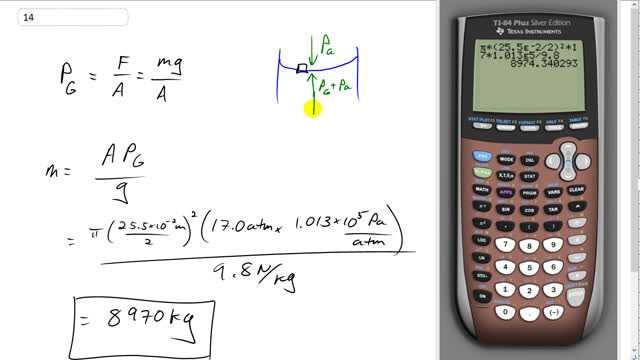
The maximum gauge pressure in a hydraulic lift is 17.0 atm. What is the largest-size vehicle (kg) it can lift if the diameter of the output line is 25.5 cm?

In order to watch this solution you need to have a subscription.
This is Giancoli Answers with Mr. Dychko. This hydraulic lift which has a car on top of it is gonna experience atmospheric pressure downwards and from underneath, it's gonna experience this gauge pressure plus this atmospheric pressure upwards. So this gauge pressure is the amount by which the pressure in this hydraulic fluid exceeds atmospheric pressure. So you can think of this as there being a net pressure upwards of the gauge pressure. So the net force upwards then will be divided by the area is gonna be this gauge pressure and to just barely lift the car, this force upwards will have to equal the weight of the car downwards and so we have mg over A is the gauge pressure. So we'll rearrange this for m by multiplying both sides by A and dividing by g and we have the maximum car mass is gonna be the area of the hydraulic lift times the gauge pressure divided by acceleration due to gravity. So that's π times 25.5 times 10 to the minus 2 meters converting this centimeters into meters and divide that by 2 since that's the diameter and we want the radius and square that and then times by 17 atmospheres times 1.013 times 10 to the 5 pascals per atmosphere because we need some SI units in our calculations and divide that by 9.8 newtons per kilogram and we get 8970 kilograms is the maximum mass that the hydraulic lift can lift.
Where did the pi come from?
Hi hannahsmidnight, we need to calculate the area of the circular piston, so that's where comes from: the area of a circle is .
Best wishes,
Mr. Dychko